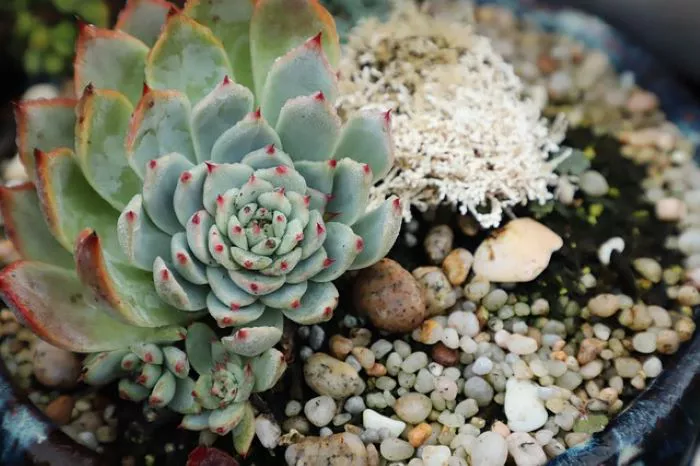Planting succulents in a strawberry planter is a creative way to display these beautiful plants while maximizing vertical space. Strawberry planters, typically designed for growing strawberries, have multiple pockets that provide an excellent opportunity to create a stunning succulent garden. This article will guide you through the process of planting succulents in a strawberry planter, covering everything from choosing the right planter to caring for your plants.
Understanding Strawberry Planters
Strawberry planters are usually made of clay, plastic, or ceramic and feature a cylindrical shape with multiple openings on the sides. These openings allow for planting in multiple directions, making them ideal for small spaces such as patios, balconies, or even indoors. The design promotes good drainage, which is crucial for succulents that thrive in well-draining soil.
Choosing the Right Strawberry Planter
When selecting a strawberry planter for succulents, consider the following factors:
Material: Choose a planter made from breathable materials like terracotta or ceramic. These materials help regulate moisture and prevent root rot.
Size: Ensure the planter is large enough to accommodate the succulents you plan to grow. A planter that is at least 12 inches tall and has multiple pockets is ideal.
Drainage: Check that the planter has adequate drainage holes at the bottom and that each pocket allows excess water to escape. Proper drainage is essential for succulent health.
Selecting Succulent Varieties
When planting succulents in a strawberry planter, choose varieties that will thrive in similar conditions. Consider the following factors when selecting your plants:
Light Requirements: Most succulents prefer bright, indirect sunlight. Ensure the varieties you choose can thrive in the light conditions of your intended location.
Growth Habits: Select a mix of trailing and upright succulents to create visual interest. Some popular choices include:
Trailing Varieties: String of Pearls, Sedum morganianum, and Burro’s Tail.
Upright Varieties: Echeveria, Haworthia, and Aloe.
Preparing the Planter
Before planting, prepare your strawberry planter to ensure optimal conditions for your succulents. Follow these steps:
Clean the Planter: If you are reusing an old planter, clean it thoroughly to remove any debris or old soil. This helps prevent disease.
Add Drainage Material: Place a layer of small pebbles or gravel at the bottom of the planter. This will enhance drainage and prevent water from accumulating at the base.
Prepare the Soil Mix: Use a well-draining soil mix specifically designed for succulents and cacti. You can create your own by mixing regular potting soil with perlite or coarse sand in a 2:1 ratio.
Planting Succulents in the Planter
Now that your planter is prepared, it is time to plant your succulents. Follow these steps:
Fill the Planter: Add the soil mix to the planter, filling each pocket as you go. Leave some space at the top of each pocket to prevent soil from spilling out when watering.
Plant the Succulents: Gently remove each succulent from its nursery pot, taking care not to damage the roots. Place the succulent into the pocket, ensuring that the roots are covered with soil. Firm the soil around the base of the plant to provide stability.
Arrange for Aesthetic Appeal: Consider the height and color of each succulent as you plant. Place taller varieties in the top pockets and shorter ones in the lower pockets for a balanced look.
Watering the Planter
After planting, it is important to water your succulent planter properly. Follow these guidelines:
Initial Watering: Water the planter lightly after planting to help settle the soil around the roots. Use a spray bottle or a watering can with a narrow spout to avoid overwatering.
Ongoing Watering: Allow the soil to dry out completely between waterings. Succulents prefer dry conditions, so it is better to underwater than overwater. Depending on your environment, you may need to water every two to four weeks.
Providing Adequate Light
Succulents thrive in bright, indirect light. Place your strawberry planter in a location that receives adequate sunlight, such as near a south-facing window or on a sunny patio. Monitor your plants for signs of too much sun, such as scorched leaves, and adjust their position as needed.
Caring for Your Succulent Planter
Caring for your succulent planter involves regular maintenance to ensure healthy growth. Here are some tips:
Fertilizing: Succulents do not require frequent fertilization. Use a diluted, balanced fertilizer during the growing season (spring and summer) every four to six weeks.
Pruning: Remove any dead or dried leaves to maintain the planter’s appearance. Pruning also encourages healthy growth and prevents pests.
Pest Management: Keep an eye out for pests such as mealybugs or aphids. If you notice any infestations, treat them with insecticidal soap or neem oil.
Seasonal Considerations
As the seasons change, your care routine may need to be adjusted. During the winter months, succulents typically require less water, as they enter a dormant phase. Be cautious not to overwater during this time. In contrast, during the growing season in spring and summer, you may need to increase watering frequency.
Conclusion
Planting succulents in a strawberry planter is a fun and rewarding project that allows you to create a unique vertical garden. By selecting the right planter, choosing suitable succulent varieties, and providing proper care, you can enjoy a vibrant display of succulents in your home or garden. With a little effort and attention, your strawberry planter will flourish, bringing beauty and greenery to your space. Enjoy the process of planting and watching your succulent garden thrive.


